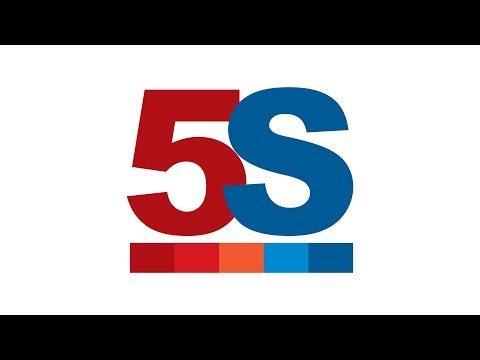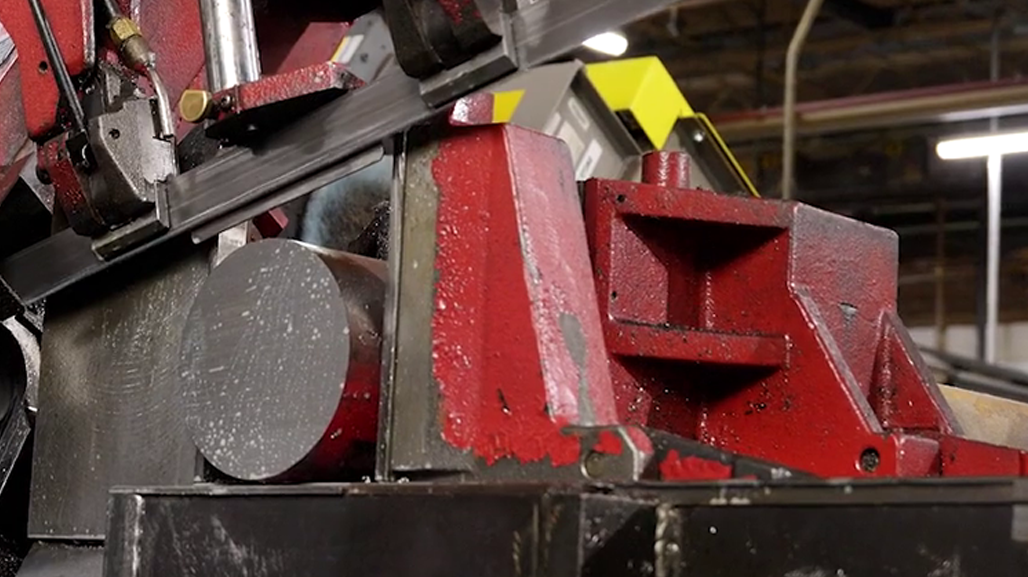How National Marker Helps Companies Develop Lean Manufacturing Processes with Visual Communication
Learn how National Marker Company (NMC) helps manufacturers develop smart strategies for workplace efficiency.
Learn how National Marker Company (NMC) helps manufacturers develop smart strategies for workplace efficiency.
Lean manufacturing techniques help companies become more efficient and less wasteful. Here’s how National Marker Company (NMC) helps manufacturers develop smart strategies for workplace efficiency.
In recent years, manufacturers have started to implement lean manufacturing processes to minimize waste, which in turn reduces costs and boosts productivity.
The general idea of lean manufacturing is to identify (and eliminate) any action or process that needlessly adds to a company’s costs and that doesn’t add value.
Examples of this waste may include time spent searching for a misplaced tool shared between workstations, or the problem of overlooked inventory that builds up on the shop floor, taking up valuable space and impeding workers as they move about a facility.
How can companies create their own lean workplaces? Visual aids can play an important role, according to Jeff Jordan, regional sales manager for National Marker Company (NMC). NMC provides signs and other safety communication products to companies looking to develop processes that enforce or reward successful lean manufacturing behaviors.
Here are five ways NMC helps companies on their lean journeys.
Key performance indicators (KPI) are important elements of a company’s drive toward change. They reveal areas in need of improvement and open up discussion for how that improvement can be achieved.

When a company visually communicates its performance metrics by posting KPI signage throughout a facility, it is showing what all employees should be accountable for, Jordan says.
“You visually communicate your performance metrics that show what you want to achieve, and what is and isn’t acceptable, and that brings in the accountability factor,” he says. “Everything is clear and open. Workers understand what’s required of them.”

The spread of COVID-19 over the past year has led to the establishment of wellness stations in many organizations.
These stations may include personal protective equipment (PPE) such as N95 masks or nitrile gloves, or hand sanitizers and disinfecting wipes. They allow workers to play a part in your office safety measures, increasing accountability and personal responsibility, and they instill confidence that safety is a top priority for a company that uses them.
You might locate a sanitation station at the entrance to the cafeteria, near the back loading dock, or on the production floor so everything is easily accessible when workers need to replace or grab new PPE to keep themselves safe, Jordan says.
From a performance indicators standpoint, these stations allow your company to track the frequency with which a location has been cleaned or sanitized, Jordan adds.
“This could be the places where workers congregate on the production floor, in the washrooms or the cafeteria,” he says. “You are visually giving people peace of mind that cleanliness is a top priority.”
Read more: Efficient Air Leak Detection: How to Manage Leaks Effectively in Your Facility
The Occupational Safety and Health Administration (OSHA) requires that facilities display certain signs to warn against particular workplace hazards. These signs should have a distinct color scheme: On certain signs the word “danger” should be a contrasting color to ensure maximum visibility, on a red field in black text, for example.
When you take a typical OSHA sign that everyone has, but you standardize it, you personalize it to make it specific to the customer, Jordan says. Doing so increases the sign’s relevancy to employees.
It’s about utilizing the correct OSHA header based on the kind of danger an employee could be facing, he says.
“You want to be sure that you communicate the hazard properly and that the message is always clear and concise and readable to the employee,” he adds. “But when it is personalized, you can use specific words that are relevant to your facility. A company might have a particular campaign or a particular way they want to communicate things that will be understood by their employees. That’s the benefit of standardization.”

It’s possible to help a company manage its budget by improving accountability, Jordan says.
By using tools such as shadow boards or wellness stations, we create a safe, hazard-free workplace and as a result, increase morale and productivity. Everyone knows exactly where things are because everything is standardized. And employees buy into the process and help keep the facility clean and orderly, increasing productivity and process flows. There’s a comfort level and you uplift the workforce because you’ve reduced the ambiguity; there’s greater peace of mind, Jordan says.
A shadow board, for example, can minimize the possibility of tool loss or theft so that the cost of replacement is no longer an issue. It’s also easy for a supervisor to scan the floor and look for missing items. It makes for not only an orderly workplace but also a reduction in the cost of replacing items, he says.
“It’s a case of Bill last used the tool, but he gave it to Joe, and Joe loaned it to Manny,” Jordan says. “You spend 30 minutes trying to track down a power tool, but if there was a designated place for it where it’s signed in and out there’s an accountability factor built in. So an employee knows he or she is responsible, and that person takes ownership of a particular tool or part, or whatever it may be, and so you tend to take care of things a little bit better and cut replacement costs.”
Read more: How to Tell When It’s Time to Replace Your PPE
Reducing waste in manufacturing starts by ensuring streamlined processes.
A typical facility can face waste in the time spent looking for items on the shop floor, or from overproduction: overestimating production numbers, for example.
You can tackle waste at the source by designing and configuring workstations in a way that improves efficiency and provides employees with a relaxed working position, Jordan says, noting that employers should “ensure that a worker is surrounded with everything he or she needs to do a job effectively.”
“Walk time, downtime or overproduction—these things are reduced dramatically because workers don’t do all that traveling back and forth across the facility to grab tools,” he adds.




